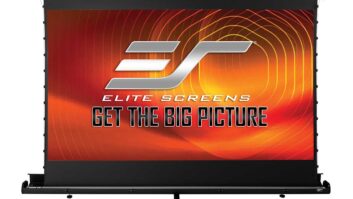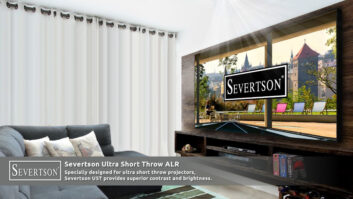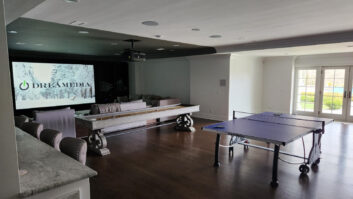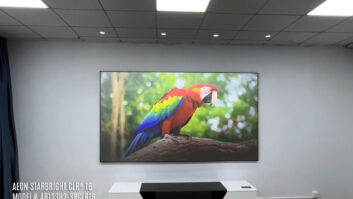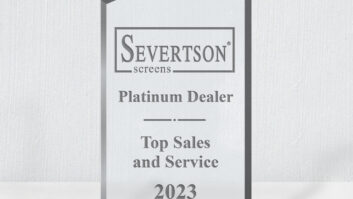Ram Ragulan, President
The Astrum Group, Ridgewood, NJ

What are your key considerations when recommending a projection screen for you clients?
To keep up with the higher resolution projectors hitting the market today, it is essential to have a superb micro-perf acoustically transparent material. For this reason, I prefer to use Elite’s AcousticPro 4K material on account of its fantastic acoustic transparency, and amazing black-level contrast in picture quality.
On occasion, there is also some demand for the ambient light-rejecting “black” screens. LED technologies tend to dominate over projection screens on installations that require a screen size of less than 100-inches diagonally. However, there is a niche of the market that wants a screen like this for larger projection screen sizes.
What features would you like to see integrated in future projection screen iterations?
There is a growing need for anamorphic projection screens with adjustable borders that accommodate variable aspect ratios. Home theater projectors with lens memory features to change the actual picture’s aspect ratio are becoming the norm. Another trend to carefully watch [for] is projection screens that are larger than what has been the typical formula in home theater design.
Jason Hanifan, Area Sales Manager
Home Pro, Dallas, TX

What are your key considerations when recommending a projection screen for your clients?
I usually start with the basic questions: who, what, when, where, and why. Then, I follow with: Who will be using this screen? Is it just mom and dad or just the kids? How about the whole family? What will you be watching on this screen? Are you using it strictly for movies, or also for TV shows, sports, console gaming, Xbox Kinect, or Nintendo Wii?
A common misperception is that an 80 to 90-inch LCD TV is better, brighter, and less of a hassle than a two-piece projection combination. Once you delve into this a little further with the client and present the price-per-square-inch value proposition, they will usually be far more interested in a two-piece solution. In fact, I usually show the benefits of dollar per inch (yes, I show the math!), and provide a demo in both low and full light.
What features would you like to see integrated in future projection screen iterations?
I hope 2.35 configurations become more common, especially with the higher resolution projectors that are on the horizon. I’d also like to see larger screen sizes in Black Diamond and other Zero Edge screens, as well as an acoustically transparent ambient light rejection screen.
Gerald Mickelson, CEO
Mesa Security, Gilbert, AZ

What are your key considerations when recommending a projection screen for you clients?
What is the project budget? How large of a room, how many seats? Is it a dedicated home theater? Do you have control over the ambient light? What is the quality of the projector being installed?
What features would you like to see integrated in future projection screen iterations?
Quick, efficient assembly with helpful hints for speedy installation (like a series of 60-second, no frills YouTube videos).


